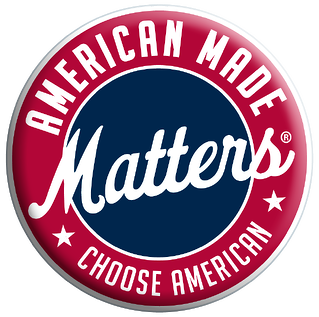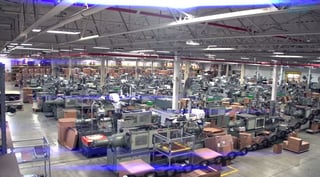For years, products made in the United States have been considered to be more expensive than products made overseas. Manufacturing was cheaper outside of the US, and it was easier to find the low-paid labor needed to keep factories running. In 2004, each manufacturing dollar in the United States cost only 86.5 cents to produce in China, leaving a much wider margin for profit for goods made overseas. According to The Boston Consulting Group, by 2014, that number had changed substantially: each manufacturing dollar in the United States costs 95.6 cents to  manufacture in China. The trend suggests that the gap between those numbers can only close further. As a result, a growing number of American companies are reversing the trend and bringing manufacturing back to the United States.
manufacture in China. The trend suggests that the gap between those numbers can only close further. As a result, a growing number of American companies are reversing the trend and bringing manufacturing back to the United States.
In the 1980s, Japan led a wave of investment into America. Then came China’s turn. In the last decade and a half, Chinese firms have spent around $46 billion in acquisitions and new establishments across America. These investments, many of which were made in only the past five years, have been across many different companies and a wide span of industries. By the end of 2014, there were almost 1,600 established Chinese firms across the United States.
Label-Land.com, an American label company that provides parents with an array of products to keep track of their children’s belongings, recognizes this trend and has built their company on the quality and efficiency offered by American production. This leader in the clothing label industry cites several factors contributing to this US “manufacturing revolution.
Contributions to the Trend
The narrowing gap between the cost of manufacturing in China and the cost of manufacturing in America has been closing rapidly. Both trends in America and trends in China have contributed to this shift. As China’s economy has developed, wages have risen. So have the costs of land, energy, and raw materials. Chinese manufacturing wages have risen by 187% over the last decade, while manufacturing wages in the United States have increased only 27%. Industrial electricity costs have risen 66% in China. Natural gas costs, on the other hand, are up 138%. In the United States, they have dropped 25%. Pay throughout China has risen at least 15% annually, which means that manufacturers must budget accordingly.
It is now cheaper to produce some goods in the southern United States than it is to produce them in China. There’s a shorter supply chain: the engineers, the manufacturers, and the customer base are all contained within the same geographic area. The cost of shipping and transportation has  shot up in recent years, while domestic energy prices are low enough to support manufacturing growth. Not only that, the natural gas boom in America has lowered the cost of electricity: a strong attracting factor for energy-intensive manufacturing industries. In addition, manufacturers need highly trained workers who know how to operate their automated systems.
shot up in recent years, while domestic energy prices are low enough to support manufacturing growth. Not only that, the natural gas boom in America has lowered the cost of electricity: a strong attracting factor for energy-intensive manufacturing industries. In addition, manufacturers need highly trained workers who know how to operate their automated systems.
Research and development have also shifted toward the United States. There is a great deal of innovation occurring in every sector alongside strong protection for intellectual property rights. The United States provides a strong talent pool. All of these facts are major draws for Chinese companies, which are pouring hundreds of millions of dollars into research and development in the United States each year. State and local governments also provide tax breaks and other subsidies for companies that set up shop in their jurisdiction: an incentive that many businesspeople can’t resist.
The Manufacturing of the Future
So long as current trends continue, many professionals estimate that around 20-25% of the products that were previously manufactured offshore will ultimately return to the United States. This is particularly true of industries that need access to qualified labor or proximity to American consumers. Heavily automated industries, which don’t have a strong need for low-cost labor, will likely be among the first to make this shift. Industries that have a heavier reliance on cheap labor, however, are expected to remain offshore for the time being.
The biggest challenge of reshoring is finding enough skilled labor. New people must be trained to fill these roles and take on the skilled manufacturing challenges, particularly in jobs that require more heavy labor than many workers are accustomed to. As training increases and more manufacturers make their homes in these areas, however, it’s likely that other businesses will quickly follow. The biggest beneficiaries of this reshoring trend include Districts in North Carolina, Illinois,Virginia, and Texas. The fact that most of these states are within the South isn’t by accident. These are the areas where manufacturing costs are low and the labor pool is relatively large, providing the perfect factors for a manufacturer looking for the lowest-cost option for their plants.
About the author: Benjamin Lamm is a content specialist at Label Land, LLC, an online retailer of American made, mom-friendly labels for home, school and camp. He is a writer, musician, father and husband (not in that order!)









Comments